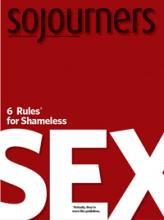The protests that have rocked Iran are of great significance for the politics and society of a Middle East regional superpower, yet the mainstream press seems incapable of analyzing crucial events there, and the courageous protest movement, without simplification and decontextualization.
In terms of the election itself, this is not a case of “goodies” versus “baddies.” Mousavi, who became the principal political figurehead opposing the results of the highly suspect June 12 election, is a veteran of the Islamic revolution. As prime minister for most of the 1980s, he had low tolerance for dissent and was backed by then-Supreme Leader Ayatollah Khomeini.
What is unfolding is more like two distinct, yet connected, phenomena: a bitter conflict over future policy direction within the ruling elite, and an explosion of anger by many Iranians demanding political and human rights.
Nine days after the election, I spoke online with a journalist in Tehran. He told me that the “regime” was killing people “brutally,” and that he had himself witnessed people being beaten. On the meaning of the demonstrations, he said: “People want freedom and justice. It is about more than Mousavi—it’s an excuse to protest the whole system.”
My source was finding it difficult to work as a journalist in Tehran, telling me he was ordered to omit a story he had written about people being killed during protests. He was also pessimistic about the chances of real change in Iran: “This regime has many powerful security forces, which they spend so much money on. The only thing that can bring them to their knees is a strike—but there are no unions.” (Independent trade unions are banned in Iran.)
Read the Full Article
